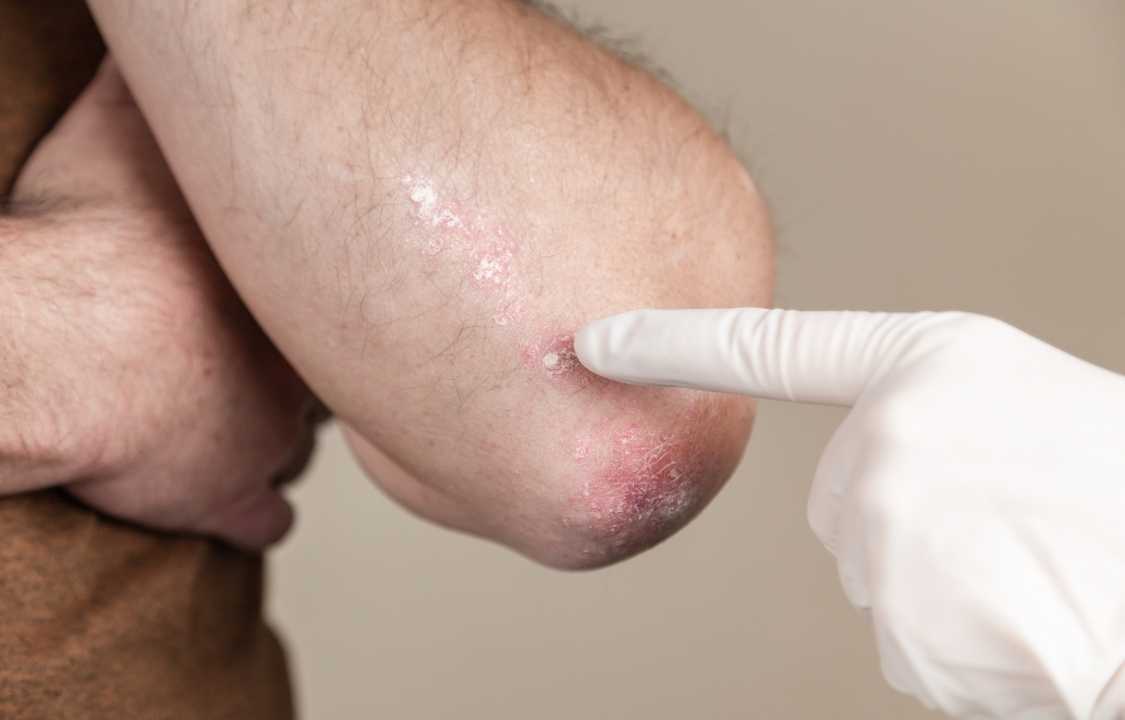Chronic, Disease, Health Care, Insight, Treatment
The Best Plaque Psoriasis Treatments, According to Dermatologists
With so many therapeutic options, there’s no reason to suffer in silence.
Plaque psoriasis can be a physically and emotionally challenging condition to deal with, as it manifests as red and silver thick, scaly patches of skin. Fortunately, there is a wide array of treatment options available to manage and alleviate its symptoms. Plaque psoriasis is the most common form of psoriasis, characterized by these distinctive skin lesions.
Dr. Robert T. Brodell, Chair of the Department of Dermatology at the University of Mississippi Medical Center, emphasized the importance of available treatments, stating that “wearing your disease on the outside of your body can be very difficult, which is why it’s wonderful that we have so many plaque psoriasis treatments that we can use to make people better.”
Over the past two decades, there have been significant advancements in the treatment of plaque psoriasis. Dermatologists now have a multitude of options to tailor treatment plans to each individual patient, according to Dr. Brodell.
Here, we delve into the three most effective categories of treatments for managing symptoms and reducing flare-ups of plaque psoriasis.
Understanding Plaque Psoriasis:
Before delving into the treatment options, it’s essential to understand what plaque psoriasis looks like and its impact. Plaque psoriasis is characterized by the development of red and silver patches of thick, scaly skin. While there is no known cure for psoriasis, numerous treatment options can help manage the condition’s symptoms.
Treating Plaque Psoriasis:
1. Topical Treatments: Topical treatments are often the first line of defense against plaque psoriasis. These treatments, such as steroid creams, are designed to reduce scaling and redness of the affected skin. Healthcare providers typically start with strong topical treatments, especially for localized psoriasis. If there is no improvement, they may explore other options. Some topical treatments require a prescription, while others can be purchased over the counter. Examples of non-steroidal options include calcipotriene, tazarotene, calcineurin inhibitors, and roflumilast. Additionally, OTC lotions, foams, bath products, and shampoos can provide relief. Some OTC products carry the National Psoriasis Foundation (NPF) Seal of Recognition to ensure safety and effectiveness.
2. Light Therapy (Phototherapy): Light therapy, also known as phototherapy, involves exposing the skin to ultraviolet (UV) rays to slow down skin cell growth, suppress the immune system, reduce inflammation, and promote healing. However, it primarily benefits the skin and may not have a significant impact on joint disease or underlying medical issues associated with psoriasis. Researchers have explored the possibility of at-home light therapy as an alternative to office-based treatments, offering convenience for patients.
3. Systemic Medications: When topical treatments and light therapy prove ineffective, healthcare providers may prescribe systemic medications or biologics. These drugs work within the body to slow down the immune system’s response. Some common options include methotrexate, Soriatane (acitretin), Otezla (apremilast), Sotyktu, and Cyclosporin. Intravenous and injectable biologics, such as Cimzia, Enbrel, Humira, Taltz, Cosentyx, Tremfya, Skyrizi, and Ilumya, can target specific areas of the body. These targeted therapies can significantly alleviate psoriasis symptoms, but healthcare providers may need to explore different options to find the most effective treatment for each patient.
Complementary and Alternative Approaches:
Many individuals with psoriasis explore non-traditional therapies alongside conventional treatments. Some of these complementary approaches include:
- Aloe Vera: Aloe vera gel may help reduce redness and scaling and can be applied several times a day.
- Apple Cider Vinegar: Applying diluted apple cider vinegar can relieve itching on the scalp caused by psoriasis.
- Capsaicin: Creams and ointments containing capsaicin, derived from chili peppers, can help block nerve endings causing pain, reduce inflammation, and alleviate redness and scaling.
- Sea Salt: Adding Dead Sea salt or Epsom salts to warm baths can help remove scales and relieve itching.
- Turmeric: Curcumin, found in turmeric, can be effective for treating psoriasis when taken orally or applied topically. However, it’s essential to use these products in recommended amounts and consult with a healthcare provider, especially during pregnancy or breastfeeding.
- Mahonia: Mahonia, an antimicrobial herb, can help manage mild to moderate psoriasis when applied topically in the form of a cream containing 10% mahonia.
- Physical Therapy and Massage: Physical therapy and massage may benefit those with psoriatic arthritis by increasing joint mobility and alleviating pain and stiffness.
- Acupuncture: Traditional Chinese acupuncture may be beneficial for treating psoriasis, though more research is needed to determine the most effective technique.
- Mind-Body Therapies: Stress can trigger psoriasis flares, making mind-body interventions like meditation and relaxation techniques potential complementary treatments.
- Indigo Naturalis: Applied topically, indigo naturalis, a derivative of indigo plants, is considered safe and effective for treating psoriasis.
- Cannabis: Research on the effects of medical cannabis for psoriasis is ongoing, with potential anti-inflammatory benefits being explored.
- Anti-Inflammatory Diet: While there is no specific diet that can cure psoriasis, consuming certain foods with anti-inflammatory properties, such as tomatoes, olive oil, green leafy vegetables, nuts, fatty fish, and fruit, may help alleviate symptoms.
In conclusion, effectively managing plaque psoriasis necessitates a comprehensive and multifaceted approach that may involve the integration of conventional medical treatments with complementary and holistic therapies. It is of paramount importance for individuals grappling with psoriasis to establish a collaborative and ongoing dialogue with healthcare professionals in order to craft tailor-made treatment regimens that not only cater to their distinct requirements but also align with their personal preferences.
Though it is important to recognize that there is currently no definitive cure for psoriasis, the vast array of therapeutic modalities and interventions accessible today holds the potential to make a profound and positive impact on the overall quality of life for those enduring the challenges of this enduring and chronic skin condition. By taking a proactive and informed stance on their healthcare journey, individuals with psoriasis can attain better control over their symptoms and achieve a greater sense of well-being.

